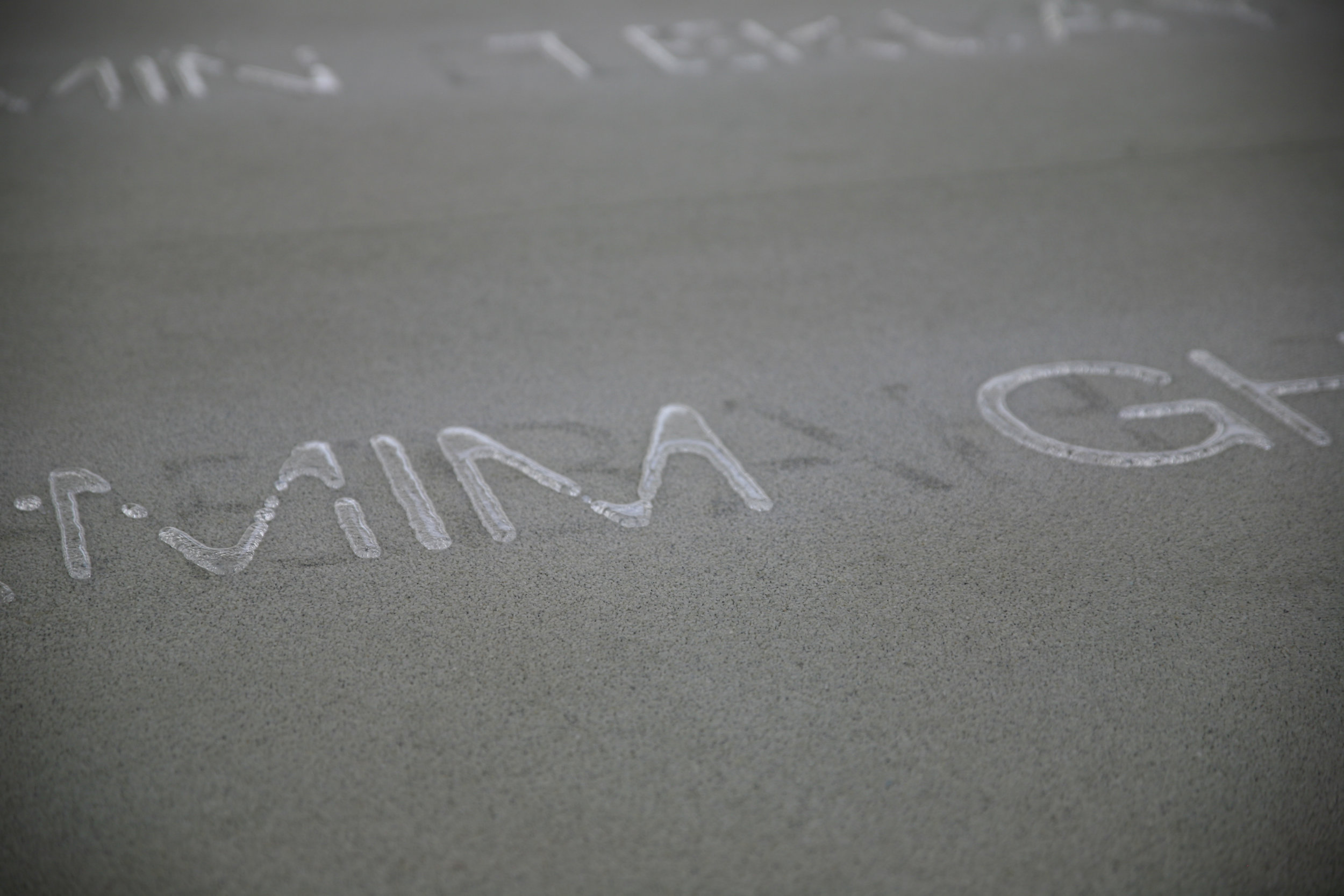Doris Salcedo | Palimpsest
Doris Salcedo:
Palimpsest
“The experience of an individual is always my point of departure. But during the process of making an artwork, I must maintain a distance in order to leave that person intact, untouched. And from there, as soon as I begin working, everything enters into the paradoxical terrain of art.
개인의 경험이 언제나 출발점입니다. 그러나 작품을 만드는 과정에서 나는 대상을 온전히 기억하기 위해 거리를 유지해야만 합니다. 그로부터 작업이 시작되면 비로소 모든 요소들이 역설적인 예술 영역 안에 존재합니다. ”
– Doris Salcedo
화이트 큐브 (Bermondsey, London)의 South gallery에 전시된 Doris Salcedo의 ‘Palimpsest’ 설치작품
런던 버몬지에 위치한 화이트 큐브 갤러리가 대규모 메인 전시로 도리스 살세도(Doris Salcedo)의 설치 작품인 ‘Palimpsest’와 ‘Tabula Rasa’를 선보인다. 콜롬비아 출신의 국제적인 예술가 살세도는 이 전시를 통해 지속적으로 관심을 가진 희생자에 대한 애도와 폭력, 익명성 그리고 공공 장소와의 연결에 다시 초점을 맞추고 있음을 보여준다.
그녀가 이 작품을 발표하며 애도하고자 하는 대상은 아프리카와 중동에서 유럽으로 향하다가 지중해 혹은 아드리아 해에서 익사한 사람들이다. 갤러리 전체를 가득 채운 석판에 300 명이 넘는 익사자 이름이 모래로 새겨진 그 위로 물방울이 모습을 드러내어 철자를 그려냈다가 흔적도 없이 사라지곤 한다. 작가는 이를 통해 시간이 지나면 어떠한 비극도 잊혀가는 사회 분위기 속에 새로운 아픔이 이전 기억을 지우면서도 더 크게 와닿도록 이끌어내는 현상을 은유적으로 표현하여 애도에 대한 생각을 강조하고자 하였다.
살세도는 5년간 ‘익사한 누군가’의 이름과 죽기 전까지의 삶을 추적하였고, 그런 전환점을 맞이하는 순간에 이르는 과정을 ‘Palimpsest’라는 고문서에 비유하여 예술적 시각으로 작품에 반영하였다. 작품은, 이름이 존재했다가 사라지는 것처럼 삶이 죽음에 이르고 지속될 것 같았던 기억이 홀연히 사라지고, 비통해 하던 감정이 강렬했던 처음과 다르게 변화하는 과정들이 모두 일시성이라는 개념으로 풀어낼 수 있다고 이야기한다.
White Cube presents a major exhibition of work by Doris Salcedo at Bermondsey. Featuring the large-scale installation Palimpsest (2013−17) and a new series of sculptures entitled Tabula Rasa (2018), the exhibition reflects Salcedo’s continued focus on the experience of mourning and the connection between violence, anonymity and public space.
In her work Salcedo questions and exposes trauma by exploring its capacity to reveal and connect with grief, carving out a space for mourning that is both poignant and insistent. ‘My work is about the memory of experience, which is always vanishing, not about experiences taken from life’, she has said. In Palimpsest, presented in the South Galleries, she deals with the subject of Europe’s migrant crisis and the many who have fled from Africa or the Middle East over the past 20 years and drowned in the Mediterranean or Adriatic attempting to cross into Europe. Produced initially for the Palacio de Cristal, Centro de Arte Museo Reina Sofía in Madrid, the installation consists of a floor of rectangular stone slabs covering the entire gallery space, on which the names of over 300 victims temporarily and intermittently appear. The names are first spelled out in sand (for those who died prior to 2010) and then in delicate droplets of water (for those who died between 2011−16); a constant state of inscription and erasure that transforms the gallery into a potent and active memorial. Bringing to mind the image of a ‘crying’ earth, Palimpsest attempts to expose the inability to collectively mourn, highlighting the way memory functions in a society which is trained to forget, where each new tragedy erases the previous one.
For Salcedo, artistic process, research and the very act of making – often highly complex and technically difficult – is fundamental to the meaning of the work. In this case, a process manifested through five years of research to obtain names and stories that could offer up potential avenues of exploration. Through its literal act of naming, Palimpsest marks an important shift away from the artist’s earlier work in which the individual particulars of a victim’s experience were not made explicit. Moreover, the work refers not just to the migrants who died, but also to those who live and mourn them, reminding us how loss defines life forever on. In an essay published in the accompanying catalogue, Andreas Huyssen has written: ‘This is the palimpsest of memory itself, embodying the temporality of writing and erasing, the temporality of memory and forgetting, the temporality of intense and subsiding grief, even the temporality of the event of death itself...’
White Cube Bermondsey
런던 화이트 큐브 갤러리
144 – 152 Bermondsey Street London SE1 3TQ
https://whitecube.com
Words & photographs by Dongeun Alice Lee
© 리아뜰매거진, 무단전재 및 재배포 금지











